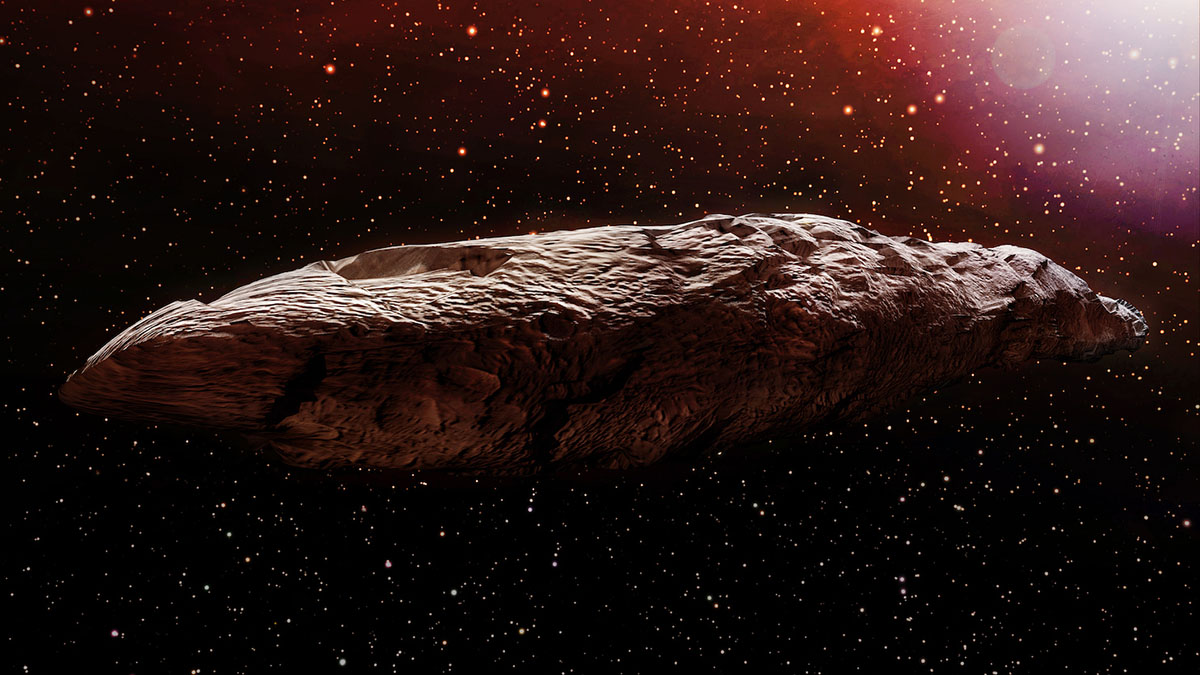‘oumuamua, the galaxy’s slowest interstellar spaceship?

Last year, a bizarre shard from interstellar space entered our solar system and after a year of cruising, it left, headed to parts unknown. It was the size and shape of a skyscraper, tumbling end over end at a bizarre angle through our stellar neighborhood. Not quite an asteroid, not quite a comet, ‘Oumuamua, or scout in Hawaiian, was truly an object we’ve ever quite seen before and many details about its origins are a mystery. So far, all we know is that it was ejected from an alien star and its similar in structure and composition to comets we see all the time. But it didn’t exactly behave like one, exhibiting odd motions and with a very strange shape.
We should have expected ‘Oumuamua to be twisted and broken by its tumbling and collisions with other cosmic debris if it acted like a typical comet, leading some to speculate that it’s actually a piece of shrapnel from a doomed planet around a star that cooled into a white dwarf. It was also thoroughly scanned for any sort of radio signal, which was never detected on the off chance it might have been some sort of alien spacecraft, a hypothesis intended to explain why it seemed to be accelerating on its arc through our solar system. And oddly enough it’s that odd acceleration which led to a paper wondering if ‘Oumuamua is actually an alien light sail.
Light sails are a technology we’ve actually built ourselves and they’re exactly what they sound like. A thin material bombarded by photons in light over a wide surface will start accelerating away from the light source as per Newton’s Third Law. Much like with ion engines, they would only work in the relative vacuum of space and move ever so slowly, building speed in little increments over a long period of time. But because they can keep gathering photons instead of relying on a single explosive burn, they can keep accelerating for many years on end. In fact, a laser-powered light sail design was suggested as a way for us to send probes to nearby stars.
The paper takes this concept and turns with it into a math heavy exercise showing how a big light sail shaped like ‘Oumuamua could survive a journey of roughly 10 kiloparsecs, or 32,600 light years, picking up energy from the photons emitted by stars it passes. It further discusses how such an object could have been used to ferry cargo between planets and wonders if it’s possible that what we saw was an alien light sail ejected out of an alien solar system, dying as it barreled through space, and picking up a thick layer of debris on its way. Another possibility the authors entertain is that ‘Oumuamua was sent on an intentional flyby of our solar system as a sort of long range, long duration probe.
However, a major red flag for this object being a light sail from another civilization is how slow it was actually moving. Comets in our solar system travel at speeds between 10 km/s and 70 km/s, and ‘Oumuamua was definitely on the slower side of that, clocking in at 26 km/s. One would think that an interstellar probe would go a lot faster because it had eons to pick up speed. A thick layer of dust which would’ve severely limited its ability to gather photons would’ve taken millions of years to build and it should’ve passed plenty of stars to resist long term drag from the interstellar medium and gather some more photons for a speed boost. In fact, that’s more than likely what its observed acceleration really was: energy from the sun melting pockets of ice on ‘Oumuamua’s surface.
Today, this didn’t change the object’s velocity by that much, but consider the premise that what we’re seeing is a machine once optimized to be propelled by light, barreling through space where there’s little to stop it or slow it down. Even with the simplest design and assuming several incidents that made it tumble, slowing it down a fair bit, it really should have entered our solar system going closer to 70 km/s based on the least ambitious solar sail designs we’ve been able to put together. And if ‘Oumuamua is a lost piece of technology, or has been intentionally sent here, it should be safe to assume that it would be traveling significantly faster because the species that built it would’ve had plenty of time to fiddle with the design and cared about getting where it wants to go fairly quickly.
It’s true that with enough time, anything could technically happen, but if we’re looking at choosing between a weird asteroid or comet of indeterminate origin flying through countless solar systems and a lost alien spaceship hundreds of millions, if not more than a billion years old lazily tumbling through interstellar space for unknown reasons, Occam’s Razor points to a pretty clear winner. We need a lot more clear cut evidence in favor of alien life and artificial properties of the object we saw to even start seriously entertaining this notion.





